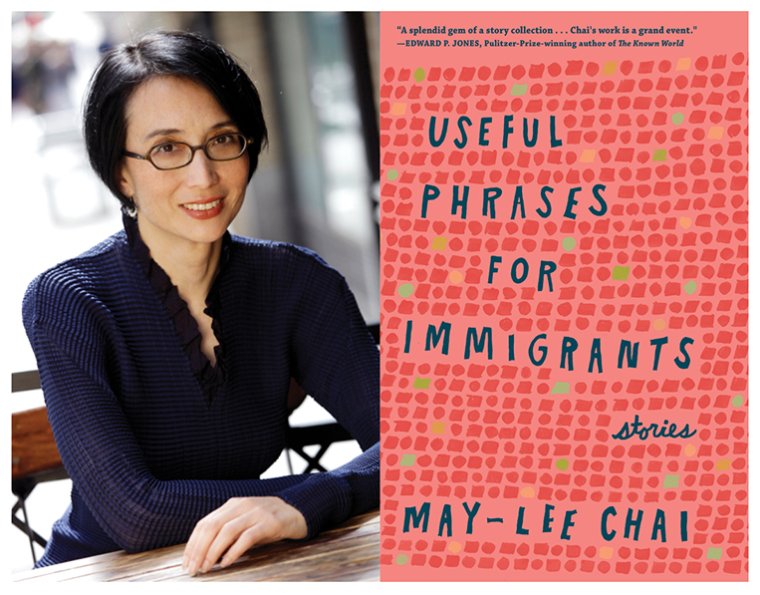This week’s installment of Ten Questions features May-Lee Chai, whose story collection Useful Phrases for Immigrants is out today from Blair, an imprint of Carolina Wren Press. Chai’s collection, which Edward P. Jones calls “a splendid gem” and Tayari Jones calls “essential reading,” is, at its essence, about migration—both physical and psychological, between cities and countries, among families and individuals. The stories are marked by complex and vividly rendered characters, Chinese American and Chinese women, men, and children who navigate relationships and the land, asking important questions about themselves, their families, and their culture. As Lisa Ko puts it, “You won’t forget these characters.” May-Lee Chai is the award-winning author of ten books, including the memoir Hapa Girl, the novel Tiger Girl, and her original translation from Chinese into English of Autobiography of Ba Jin. She is the recipient of an NEA fellowship and is an assistant professor in creative writing at San Francisco State University.

May-Lee Chai, author of Useful Phrases for Immigrants.
1. Where, when, and how often do you write?
When I first started writing as a student, I used to write after midnight, after all my work was done for the day. But now I find that too tiring. I can write only on days when I’m not teaching and when all my grading and reading are done. Otherwise, I can’t turn off my editing brain to reach my subconscious, creative thoughts.
2. How long did it take you to write Useful Phrases for Immigrants?
I had been working on some of the stories for four or five years before I decided to put together a collection. Some had already been published. Once I came up with my theme, I knew which ones should go together and how to revise the others.
3. What was the most surprising thing about the publication process?
I received the most beautiful blurb quote from Edward P. Jones. After that I thought, “I will never again receive an endorsement as wonderful, as meaningful, as generous as his. You can put this one on my tombstone!”
4. What is one thing you’d change about the literary community and/or the publishing business?
I wish it were easier for writers of color who don’t come from moneyed backgrounds to be heard and celebrated.
5. What are you reading right now?
Just finished reading Vanessa Hua’s novel A River of Stars, which is so good at taking a story that’s ripped from the headlines and then going deeper into the characters and their motivations, and I’m just starting Jamel Brinkley’s short story collection, A Lucky Man, which is full of heartbreak and longing and exquisitely crafted sentences.
6. Who is the most underrated author, in your opinion?
Sei Shonagon. She was a member of the Heian Court in 10th-century Japan and wrote a “pillowbook” of diary-like entries on daily life, rituals, human relationships, all kinds of opinionated, lyric-essay-like observations. Everyone should read her.
7. What trait do you most value in an editor?
My editor at Blair, Robin Miura, has the best editors’ traits: an eagle eye and a light hand.
8. What is the biggest impediment to your writing life?
The current political situation is the biggest impediment to my continued well-being as a woman of color in America, so that naturally impedes the writing. It takes time and energy to resist, and it takes time and energy to heal. That leaves relatively little time for everything else.
9. What’s one thing you hope to accomplish that you haven’t yet?
Peace of mind.
10. What’s the best piece of writing advice you’ve ever heard?
Writer Nona Caspers (The Fifth Woman) just visited my undergraduate class and told the students to learn to trust their subconscious. As an example, she said when something turns up in a writing exercise or in their notebooks, they should be willing to explore and unpack and develop what their subconscious is telling them is important. I thought that was great advice.







